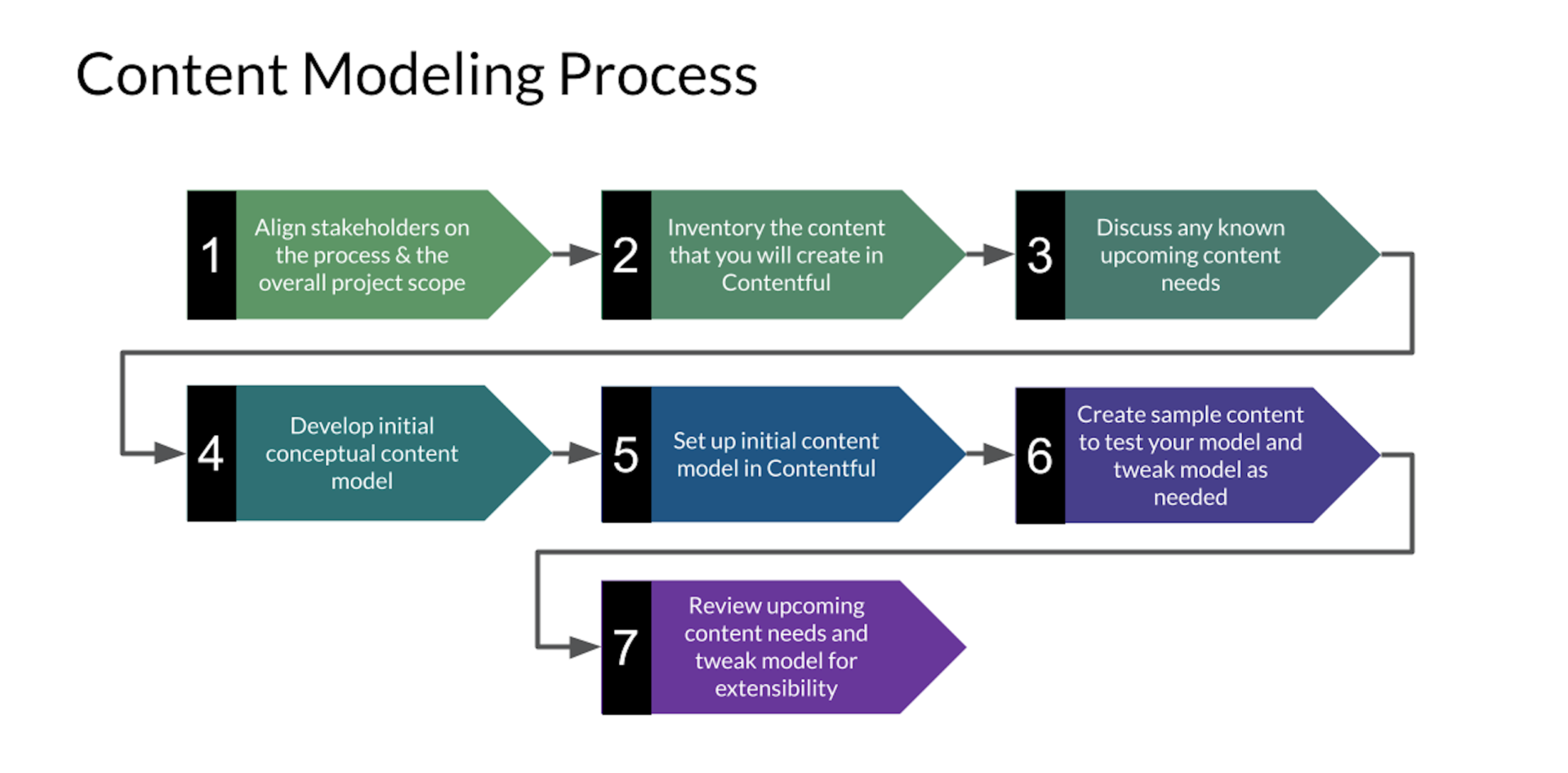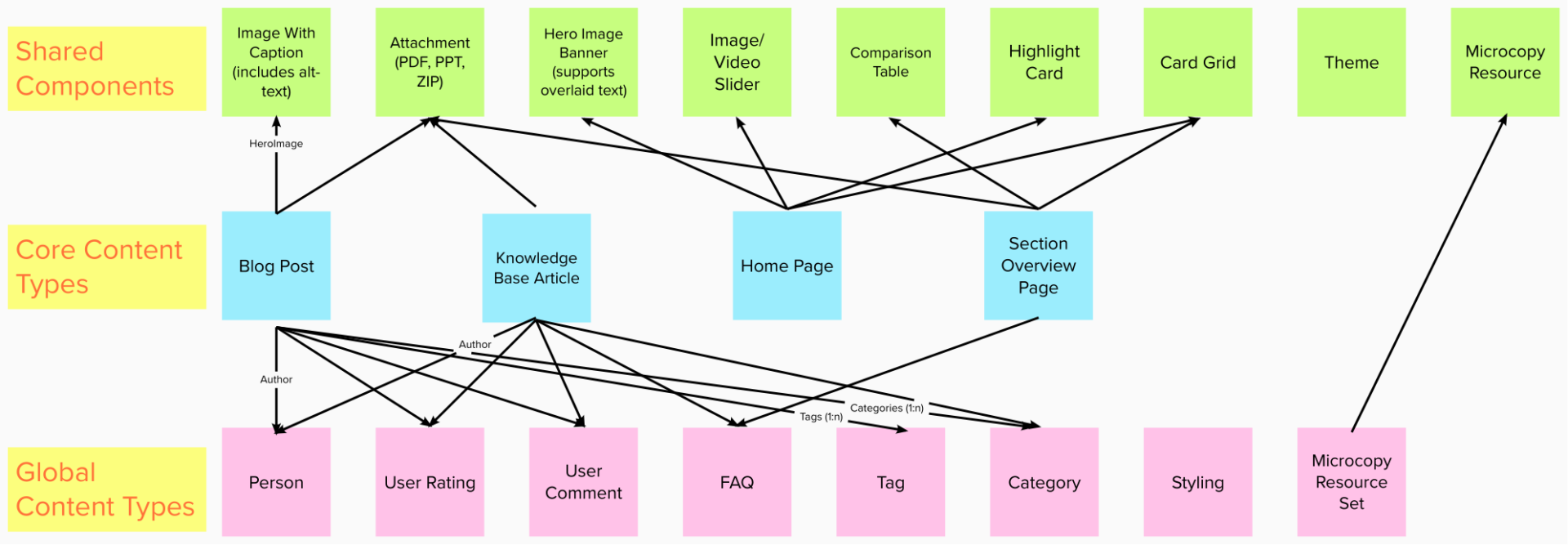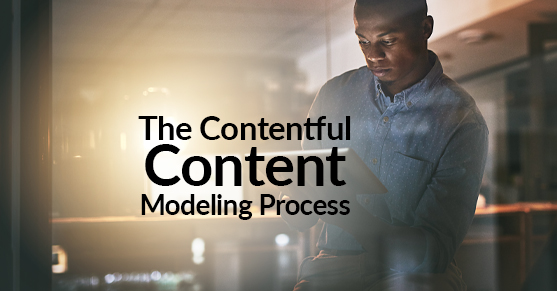If you are new to a headless CMS and Contentful in particular, and you are getting started creating content types, then this article is for you. We will introduce you to the process that we at XTIVIA recommend and follow for developing the Contentful content model. Additionally, read our companion article that gives you an overview of building a Contentful content model and covers some common design patterns.
But before we dive into the heart of our article, let us start with an assertion – a well-designed content model is essential for the long-term health of your Contentful implementation. It leads to extensibility, maintainability, scalability, consistency, and many other characteristics that we, software architects strive for and our agile business needs.
The content model not only determines what content can be stored and managed via Contentful, it also affects:
- The amount of content reuse you can achieve across content delivery channels (such as a website, mobile app, wearable, signage) and sometimes even within a channel
- The visual designs and user experiences you can create for your users
- The efficiency of the content management team
- The ease of the onboarding process for new content contributors
- The level of control the content managers have on how specific content is rendered in the content delivery channels
Additionally, the content model in conjunction with the content governance process impacts the workflows and controls you will have in place to ensure that only the right content is available to the right audiences at the right time. And to ensure that bad content does not get published accidentally.
 Suffice it to say that the content model is important and hence it is crucial to follow the right content modeling process to ensure long-term success of your Contentful implementation!
Suffice it to say that the content model is important and hence it is crucial to follow the right content modeling process to ensure long-term success of your Contentful implementation!Introducing The XTIVIA Content Modeling Process For Contentful
Over the years, XTIVIA has refined our signature content modeling process for Headless CMS in general, and Contentful in particular. This process aims to align all the stakeholders on the eventual content model and at the same time meet not just your immediate needs but also your upcoming needs. Dare we say that it helps you futureproof your content model to a large extent?
Without further ado, here is an overview of the XTIVIA Content Modeling Process.

Contentful Content Modeling Process Step 1: Stakeholder Alignment
We recommend kicking off the content modeling process by first aligning all the stakeholders on the business/project objectives/scope of the Contentful implementation and the actual content modeling process that will be leveraged. This is quite a loaded statement—so let us break this down:
- Stakeholders—a cross functional team consisting of the Domain Experts, the User Experience Designer(s), the Content Authors and Editors, the Software Architect, and the Developers. And ideally the Senior Decision Makers including the program or project sponsor.
- “Business/project objectives of the Contentful implementation”—this encompasses the overall business objectives as well as the scope of the Contentful implementation program/project. The key is to ensure that all the stakeholders have a common understanding of what the team is trying to accomplish.
- “Alignment”—this has two aspects:
- The different stakeholder groups often have different objectives and it is important to ensure that all groups understand the perspective and needs of the other groups. For example, the architect and developers may care about optimizing the amount of code they have to write or to ensure that it is performant while the content management team may care about the ease of managing content and content reuse and the designers want to ensure that the implementation results in the right UX. And sometimes, these needs can be at odds with each other—for example, a content structure that makes it easy for developers to retrieve content might make authoring the content more difficult. It might require too many fields per entry or too many levels of nesting.
- Additionally, it is important that all the stakeholders understand the content modeling process that is being used to manage their expectations.
Contentful Content Modeling Process Step 2: Content Inventory
The content inventory is a laundry list of all the different types of content that you want to create and manage in Contentful. You typically end up touching on some of this in step 1 when you go over the program/project scope, but in this step, you take a more holistic approach and identify the various content types that are core to the initiative. For example, if you are building out a public-facing website, you will have pages, navigation, different types of content components based on the site design, and may also have news and blog articles.
We typically recommend a quick brainstorm for this step with the objective being to create an initial content inventory rather than an exhaustive list of content types. You will get there further down in this process.
From a tooling perspective, we recommend using your favorite post-its. If you are doing this virtually, there are a number of tools that support virtual post-its.
Contentful Content Modeling Process Step 3: Upcoming Content Needs
This is typically another short step in the content modeling process wherein all the stakeholders align on any upcoming content needs that will follow the initial Contentful implementation. For example, you may have started with a public-facing website, and then might be looking to add a customer portal or a partner portal, and want to use Contentful for content management for those logged-in user experiences. Ensuring that the team knows what is coming up in the near future, allows the team to consider techniques to futureproof the content model.
Contentful Content Modeling Process Step 4: Conceptual Content Model
Now that the team is aligned on the overall Contentful program objectives and current/future content needs, it is time to dive into developing an initial conceptual content model. We recommend creating this initial model using physical post-it notes or virtually in a tool like Mural. At this stage of content modeling, we are not looking to get lost in details such as identifying the content fields. Our focus is on identifying the content types and their relationships with each other. We will identify a content type with a name and an optional description.

At XTIVIA, we typically take a two-pronged approach to identifying the content types. We start by identifying all the different types of content in the core content domain such as pages, news articles, blog posts, knowledge base articles, FAQs, and so on. We then factor in the overall UX and the visual design to identify the various components that will be needed to support the design such as carousels, slides, cards, hero image banners, and so on.
When building a conceptual content model, it is important to remember the following points:
- Developing a content model is an iterative process as you will never get it exactly right in one pass. So, do not be discouraged if you identify holes after you think you are done.
- Do not aim for perfection at this stage of the content modeling process because that is near impossible to achieve. Hence, do not overthink this step and move on to the next step once you feel you have identified all the topics (core content types) and most of the assemblies and relationships.
 Read our companion article that gives you an overview of building a content model in the Contentful Headless CMS, and covers some common design patterns.
Read our companion article that gives you an overview of building a content model in the Contentful Headless CMS, and covers some common design patterns.Contentful Content Modeling Process Step 5: Set Up Initial Content Model
In this step, we actually start setting up the content model in Contentful using an iterative process consisting of the following steps:
1. Create the content types but do not flesh out their fields
- Topics (the content types that are core to your content domain)
- Assemblies (these build on top of topics and contain fields for layout and site navigation data, they sometimes also have additional metadata for SEO or analytics, but they don’t have content in them)
2. Set up relationships between the content types
3. Add core content fields to each of the content types
4. Set up advanced settings for fields such as validation, localization, default value, and appearance.
5. Add meta-data fields needed for approval workflow, publishing, personalization

When setting up your content model, it is important to remember the following points:
- Create only as many content types as you need rather than go overboard and break them apart into separate content types for minor differences.
- Ensure that your content types have a reasonable number of fields – not too many and not too few. Too many and the content entry form becomes overwhelming. Too few and you create a sprawl of too many content types.
- Ensure that your content model hierarchy is not too deep; in our experience, it is best to limit this to 4 or 5 levels.
Contentful Content Modeling Process Step 6: Test And Tweak Content Model
Now that we have our initial content model set up in Contentful, we want to create some sample content and verify the usability of the content authoring experience as well as confirm that all our content needs have been modeled (i.e. completeness). Additionally, we want to think about how the content delivery front-ends will use the Content Delivery API (CDA) to retrieve content from Contentful, and whether the content model setup supports efficient code. Often enough, this step in our content modeling process helps us identify flaws in our content model— it is important to identify these defects early in your Contentful implementation and address them.
Contentful Content Modeling Process Step 7: Review Upcoming Content Needs And Tweak Content Model
In this step, we typically spend a time-boxed effort on testing our content model against upcoming content changes and determine how well our content model will hold up against those changes. We are not concerned about adding new content types or new fields on existing content types—we fully expect those kinds of changes to happen in the future as they are the norm. What we are testing for are changes that will require us to split or combine existing content types or change content type relationships, as these changes can have a more material impact on the front-end code and the content that gets created prior to the content model changes.
Again, you do not want to overthink this step as Contentful provides a flexible system and there are patterns for implementing content model changes while minimizing disruption to existing content and code.
Content Governance Versus Content Modeling
In the XTIVIA view, it is crucial to establish the Content Governance processes that you will want to follow once you have your initial Contentful implementation. While some Contentful Specialists (including Contentful) consider Content Governance to be baked into the Content Modeling process, we believe that these are two separate swimlanes in your Contentful implementation. Yes, they are strongly related and impact each other but they are both worthy of your full attention as you focus on each topic.
A couple of examples of overlap between Content Governance and Content Modeling include:
- Should the content management team be able to control how the content is displayed? How much control should they have?
- Will the content model give the content managers flexibility in terms of what components they choose to use when building a specific content article or do they have to work within a rigid structure?
- How is content reuse enabled and enforced?
Contentful Content Modeling Process: Summing It Up!
As you can see, there is a lot involved in content modeling and having the right process is crucial to your success. And having the right coaches and specialists to help you along the way is just as crucial. This is where XTIVIA can help. Please get in touch with us to learn how we can help with your Contentful implementation as your Contentful partner.
Read our companion article that gives you an overview of building a content model in the Contentful Headless CMS, and covers some common design patterns.

